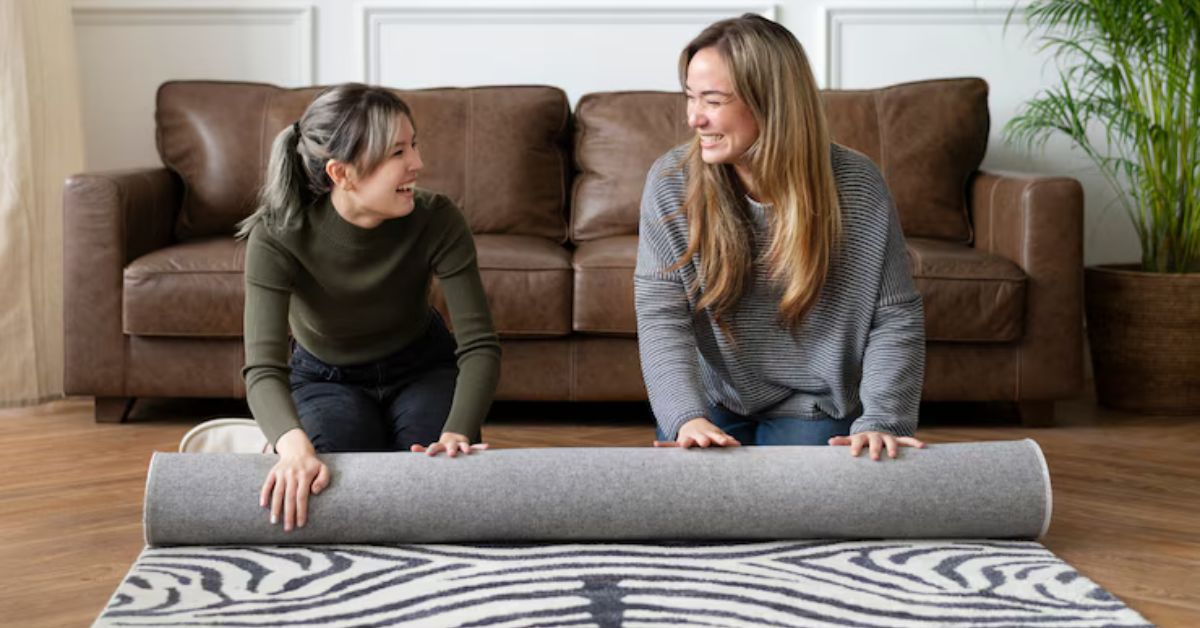The Art of Choosing the Perfect Carpet for Your Home

Introduction to Carpet Selection
Choosing the right carpet for your home is akin to selecting the perfect outfit for an important event. It’s not merely about picking a color or pattern but about how the carpet influences the overall feel and ambiance of the space. Carpets can transform even the dullest of rooms into something warm, inviting, and aesthetically pleasing. Whether in a home remodel or moving into a new abode, being knowledgeable about carpet installation and selection is crucial. This ensures you make decisions that align with your lifestyle, preferences, and budget.
A well-chosen carpet enhances the aesthetic appeal of your home and provides practical benefits such as thermal insulation and noise reduction. However, the vast array of options can make the selection process overwhelming.
Decoding Carpet Styles and Patterns
The style of the carpet you choose can significantly impact a room’s overall design and ambiance. Styles like room’s slush or cut pile carpets provide an appearance with their smooth, velvet-like finish. These are often preferred in formal settings where elegance is a key requirement. Meanwhile, loop pile carpets, such as Berber, are distinguished by their durability and ease of maintenance. They hide dirt well and are less likely to show footprints, making them suitable for high-traffic areas. Conversely, patterned carpets and textured variations allow homeowners to infuse personality and character into their spaces, creating a simple floor that is an integral part of the room, your Space for Carpet.
Achieving a flawless carpet installation begins with precise measurements. Start by measuring the length and width of each room where the carpet will be placed, remembering to account for any nooks and alcoves that might require additional material. It’s wise to add an extra 5% to your measurements to account for irregularities and cutting allowances. If your space has an unconventional layout, utilizing a professional measuring service might be advantageous to prevent costly mistakes and ensure a perfectly tailored fit.
Understanding Carpet Materials and Their Benefits
Carpets are available in many materials, each with distinct features and benefits. Wool, for instance, is a natural fiber praised for its softness and durability. It has excellent insulating properties, making it desirable for colder climates. Additionally, wool is naturally flame retardant and eco-friendly because it is biodegradable. On the other hand, synthetic fibers like nylon and polyester are popular for their robustness and affordability. According to House Beautiful, nylon is especially tailored for homes with pets and children due to its exceptional stain resistance. Polyester, similarly, offers a soft texture combined with vibrant colors, making it a sought-after choice for those aiming for style and practicality.
Exploring Different Carpet Padding Options
Carpet padding, often overlooked, is a critical component of durability. Padding serves as a cushion and augments the carpet’s insulation properties. Common types include foam, felt, and rubber, each offering varying levels of support. According to Family Handyman, selecting the right pad can enhance the feel of your carpet and even amplify its lifespan by safeguarding it against heavy furniture and foot traffic. Opt for high-density padding to improve the soft resilience, ensuring your carpet remains plush for years.
Budgeting for a New Carpet
Thorough budgeting is fundamental when planning for a new carpet. Consider not just the price of the rug itself but also additional costs such as padding and installation. The type of material, quality, and style you choose will significantly influence the cost. Remember that investing in a high-quality carpet can save money over time by reducing the need for premature replacements. Moreover, budgeting for professional installation can prevent avoidable errors, ensuring the carpet is laid correctly and lasts its intended lifespan.
Tips for Long-Lasting Carpet Maintenance
Consistent maintenance is key to prolonging the beauty and life of your carpet. Regular vacuuming, ideally once a week, helps eliminate surface dust and dirt, which can wear down fibers over time. Prompt attention to spills and stains is crucial to prevent them from setting. Utilizing a mixture of gentle soap and water or a dedicated carpet cleaner can dissolve most stains effectively. Furthermore, scheduling professional deep cleaning annually can refresh your carpet, maintaining its luster and softness while reducing allergens and improving air quality inside the home.
Environmental Impact: Is Carpet an Eco-Friendly Choice?
In an era of growing environmental consciousness, evaluating the sustainability of carpet choices is vital. Opting for carpets manufactured from renewable resources, like wool or those incorporating recycled materials, can reduce your home’s ecological footprint. Many manufacturers are investing in sustainable practices, creating carpets that are not only recyclable but also produced with minimal environmental impact. As consumers, choosing eco-friendly carpets supports these initiatives and contributes to a healthier planet.
Conclusion: Making the Perfect Carpet Decision
Choosing the perfect carpet involves a delicate balance of style, functionality, and sustainability. By familiarizing yourself with the various materials, styles, and environmental considerations, you are better equipped to make a decision that enhances your living space. Whether you decide to improve durability or eco-friendliness, a carpet out there will meet your needs. As you embark on this journey, remember that the best choice will align with your lifestyle and create an inviting atmosphere that reflects your taste and values.






